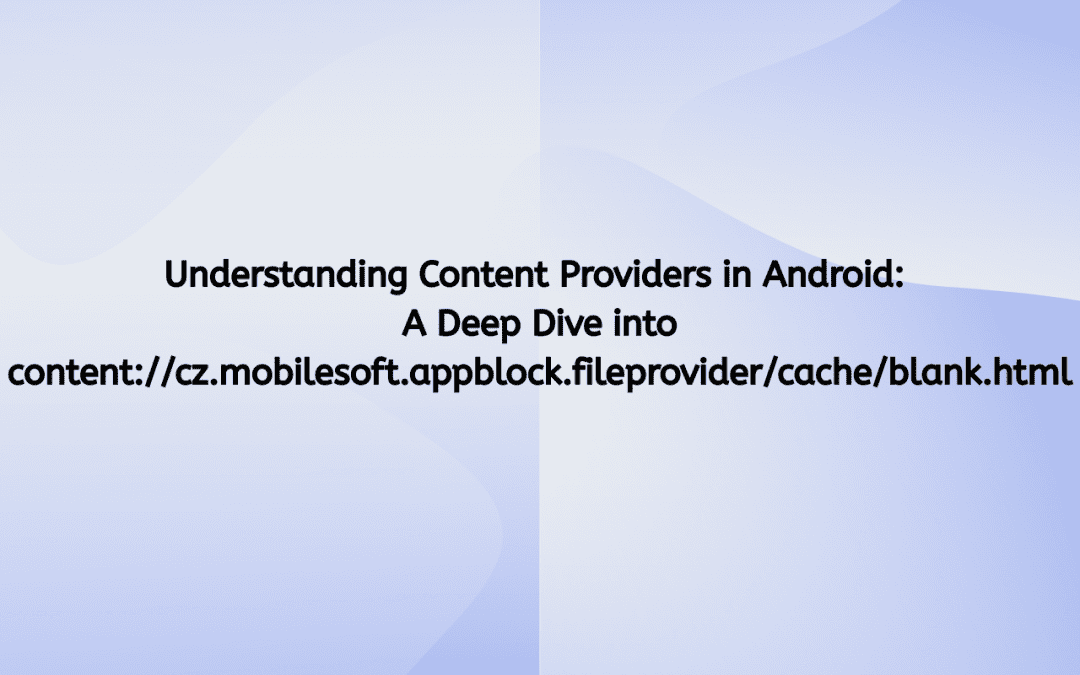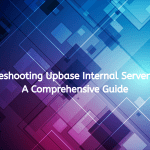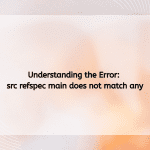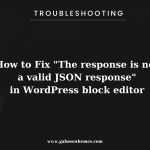Introduction
In the Android ecosystem, content providers play a crucial role in managing access to structured data across applications. They serve as an abstraction layer that allows apps to interact with data stored in various formats and locations. One such example is the URL structure content://cz.mobilesoft.appblock.fileprovider/cache/blank.html. This article aims to demystify content providers, explore the specific use case of the cz.mobilesoft.appblock.fileprovider, and discuss how developers can effectively leverage content providers in their applications.
What is a Content Provider?
A content provider in Android is a component that supplies data from one application to others on request. They encapsulate data storage and provide a standard interface for accessing that data, whether it’s in a database, a file, or even over the network. This mechanism helps maintain data security and integrity while allowing apps to share data seamlessly.
Key Features of Content Providers
- Data Abstraction: Content providers abstract the underlying data source, so the consuming app does not need to know the details of data storage.
- Inter-Application Communication: They enable different applications to access each other’s data in a secure manner.
- Consistent API: Content providers offer a consistent API for CRUD (Create, Read, Update, Delete) operations, making it easier for developers to manage data.
Analyzing the URL Structure
The URL content://cz.mobilesoft.appblock.fileprovider/cache/blank.html can be broken down as follows:
- content://: This prefix indicates it is a content URI, signaling that it will use a content provider.
- cz.mobilesoft.appblock: This segment typically refers to the package name of the application that owns the content provider.
- fileprovider: This suggests that the content provider is likely linked to file sharing, allowing access to files within the app’s storage.
- /cache/blank.html: This path points to a specific file located in the cache directory of the app, specifically a blank HTML file.
Use Cases for Content Providers
1. Sharing Data Between Apps
One of the most common use cases for content providers is to share data between applications. For example, a photo editing app can use a content provider to allow other apps to access and edit images without compromising the original files.
2. Accessing Media Files
Content providers are frequently used to access media files, such as images, videos, and audio files, stored in the device’s storage. The MediaStore content provider is a quintessential example, allowing apps to query and manage media files.
3. File Access and Management
As seen in the case of cz.mobilesoft.appblock.fileprovider, content providers can also manage file access. This is particularly useful for applications that need to share files securely, such as documents or images, with other applications or services.
Implementing a Content Provider
Step 1: Define the Content Provider
To create a content provider in Android, you need to extend the ContentProvider class. Below is a simplified example:
public class MyContentProvider extends ContentProvider {
@Override
public boolean onCreate() {
// Initialize your data source here
return true;
}
@Override
public Cursor query(Uri uri, String[] projection, String selection, String[] selectionArgs, String sortOrder) {
// Code to query your data
}
@Override
public Uri insert(Uri uri, ContentValues values) {
// Code to insert data
}
@Override
public int update(Uri uri, ContentValues values, String selection, String[] selectionArgs) {
// Code to update data
}
@Override
public int delete(Uri uri, String selection, String[] selectionArgs) {
// Code to delete data
}
@Override
public String getType(Uri uri) {
// Return the MIME type of the data
}
}
Step 2: Register the Content Provider
Once the content provider is defined, it needs to be registered in the AndroidManifest.xml file:
<provider
android:name=".MyContentProvider"
android:authorities="cz.mobilesoft.appblock.fileprovider"
android:exported="true" />
Step 3: Accessing Data via Content URI
Apps can access data from your content provider using the ContentResolver:
Cursor cursor = getContentResolver().query(
Uri.parse("content://cz.mobilesoft.appblock.fileprovider/cache/blank.html"),
null, null, null, null);
Performance Considerations
When implementing content providers, there are several performance considerations to keep in mind:
- Efficient Queries: Ensure that your queries are efficient and optimized. Indexing your database can significantly improve query performance.
- Threading: Content provider operations should be executed in a background thread to avoid blocking the UI thread, which can lead to a poor user experience.
- Caching: Implementing caching mechanisms can help speed up data retrieval and reduce the number of database queries.
Security Considerations
Content providers can expose sensitive data if not implemented correctly. Here are some security best practices:
- Limit Data Exposure: Use permissions to restrict access to your content provider. You can specify read and write permissions in your manifest.
- Data Validation: Always validate incoming data in your content provider methods to prevent malicious input.
- Secure Data Storage: Store sensitive data securely, using encryption if necessary.
Conclusion
The URL content://cz.mobilesoft.appblock.fileprovider/cache/blank.html exemplifies how content providers facilitate data sharing and access in Android applications. By understanding content providers, developers can create more robust, secure, and efficient applications.
As the Android ecosystem continues to evolve, mastering content providers will remain a valuable skill for developers. Whether you are sharing media files, managing application data, or implementing cross-app communication, leveraging content providers effectively can enhance your app’s functionality and user experience.
In summary, content providers are a powerful feature of Android, enabling seamless data sharing and management. By understanding their architecture, use cases, and best practices, developers can build secure and efficient applications that meet the needs of users in a dynamic digital landscape.

Hello everyone! We’re Galussothemes content team, we love to write new blogs for WordPress Joomla! and other tech niches everyday. We’re talented young people who hold a strong passion for website development, designing, and marketing. Feel free to leave your comment if you have any issues or questions with our blogs.










![The step-by-step instructions for how WordPress users can resolve the "[Security Alert]: Polyfill.io Issue" for the Google Maps Platform Polyfill-attacks](https://galussothemes.com/wp-content/uploads/2024/06/Polyfill-attacks-150x150.jpeg)

